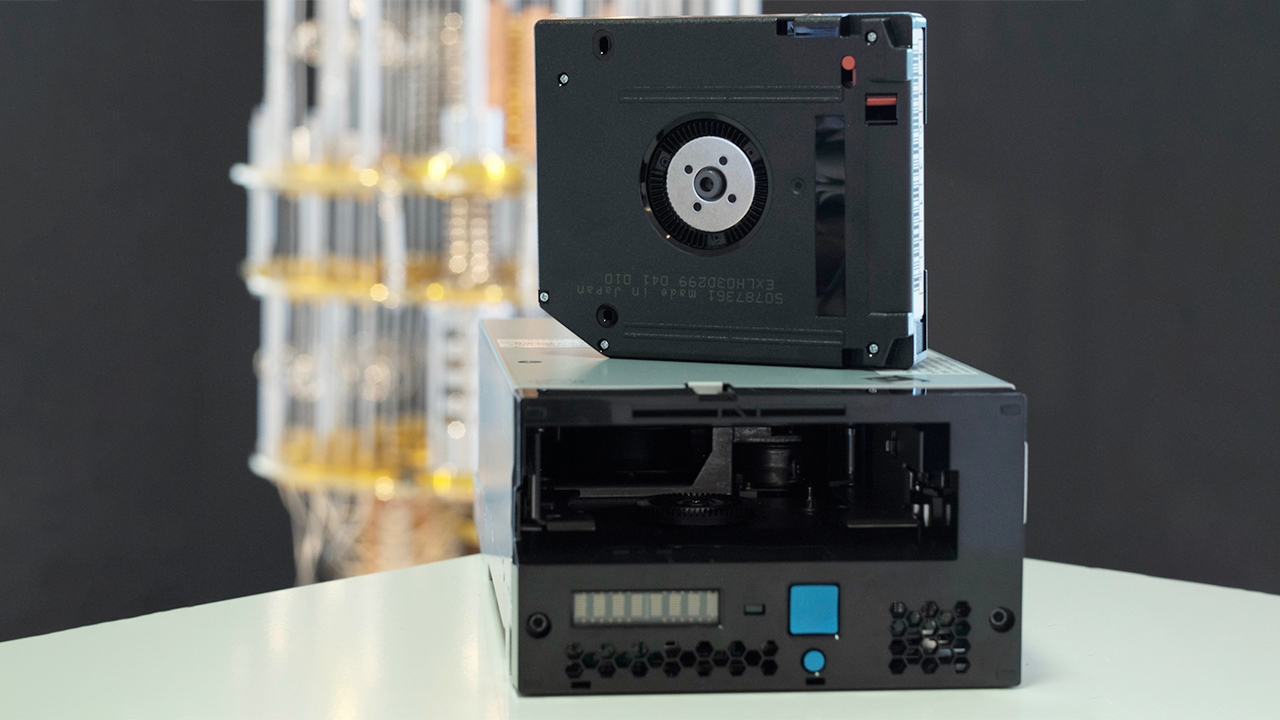An average tape drive stores roughly 12TB of data, but Fujitsu is working to expand that to 1PB, or 2.5PB after compression (2,500 TB), by 2035. That’s a massive increase from the 30TB of storage on today’s average tape drive.
Most folks aren’t aware, but the lion’s share of the world’s data is still stored on tape cartridges buried deep in data centers, and that trend isn’t expected to change any time soon. The 8th generation of the linear tape open (LTO) open tape format is widely used in data centers today. Specced for over 30TB of compressed storage and up to 750 MBps data transfer rates, LTO-8 tapes allow datacenters to store zetabytes of data that will be available for decades to come. But as demand for storage is growing, tape developers — just like developers of other types of storage — need to adopt new technologies to increase the capacity of their products.
Fujifilm this week presented its long-term roadmap for tapes that spans 15 years and includes 1TB cartridges featuring new materials, as well as a new magnetic recording method.
Today, tape cartridge makers use tapes with a magnetic layer consisting of Barium Ferrite (BaFe) magnetic particles. Such cartridges can store 12TB native or 30TB of compressed data, and their capacity is expected to gradually increase to about 100TB by 2026. In November, Fujifilm and IBM unveiled a new tape technology featuring a Strontium Ferrite (SrFe) magnetic layer that promises to enable future cartridges to store up to 580TB of data by around 2029.
The tape evolution naturally does not stop there though. Fujifilm now says that it’s on track to offer 1 petabyte (PB) cartridges by approximately 2035.
In a bid to increase tape storage capacity further, Fujifilm plans to use tapes featuring a magnetic layer based on epsilon iron oxide nanoparticles (also known as Epsilon Ferrite) that are very small and can enable extremely narrow tracks as well as a very linear density, ComputerBase reported today. To properly record data into very small pitches, the magnetic properties of the material have to be altered. To switch the magnetic pole direction of Epsilon Ferrite, Fujifilm plans to use a method called focused‐millimeter‐wave‐assisted magnetic recording (F‐MIMR) that uses terahertz (THz) light.
In addition to increasing recording density and tape capacity, F-MIMR also greatly increases writing speeds. Typical magnetic recording time on tape is on the nanosecond (ns) scale. Meanwhile, F‐MIMR is expected to write on the picosecond (ps) scale, according to Advanced Materials.
Both Epsilon Ferrite and F-MIMR are fairly new technologies, so Fujifilm does not expect to use them commercially for about 15 years. But once the technologies are ready for primetime, Fujifilm expects to be able to build 1PB cartridges, which, considering a 2.5:1 ratio, will be able to store around 2.5PB of data, as noted by Blocks & Files. Even at 1PB, such tape cartridges would significantly exceed capacities offered by today’s hard drives.
